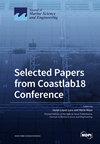Application of Self-Polishing Copolymer and Tin-Free Nanotechnology Paint for Ships
IF 2.8
3区 地球科学
Q1 ENGINEERING, MARINE
引用次数: 0
Abstract
During a ship’s voyage, it is difficult to maintain its hull, and prolonged exposure to seawater can lead to the attachment of marine organisms, which can negatively impact the ship’s speed. The original self-polishing copolymer was a tributyltin-containing paint used for applying two layers of protective coating onto a ship’s bottom plate. According to International Maritime Organization (abbreviated as IMO) regulations, users are no longer allowed to use paints containing tributyltin. Therefore, manufacturers have developed a tributyltin-free paint, known as tin-free nanotechnology paint, which can be used as a replacement for the base coat on ship bottom plates. This study involves the use of a self-polishing copolymer spray and tin-free nanotechnology paint. A model coated with these two types of paint will be observed underwater to study the growth of marine organisms. Additionally, fuel consumption will be analyzed through underwater inspections and sea trials. Based on the experimental data, it is known that tin-free nanotechnology paint can significantly reduce the need for repairs in factories and greatly decrease maintenance costs when compared to self-polishing copolymers.自抛光共聚物和无锡纳米技术涂料在船舶上的应用
在船舶航行过程中,船体很难得到保养,长期暴露在海水中会导致海洋生物附着,从而对船舶的航速产生负面影响。最初的自抛光共聚物是一种含三丁基锡的涂料,用于在船底板上涂抹两层保护涂层。根据国际海事组织(简称 IMO)的规定,用户不得再使用含有三丁基锡的涂料。因此,制造商开发了一种不含三丁基锡的涂料,称为无锡纳米技术涂料,可用于替代船底板的底层涂料。本研究涉及自抛光共聚物喷涂和无锡纳米技术涂料的使用。将对涂有这两种涂料的模型进行水下观察,以研究海洋生物的生长情况。此外,还将通过水下检测和海上试验分析燃料消耗情况。根据实验数据可知,与自抛光共聚物相比,无锡纳米技术涂料可大大减少工厂的维修需求,并大大降低维护成本。
本文章由计算机程序翻译,如有差异,请以英文原文为准。
求助全文
约1分钟内获得全文
求助全文
来源期刊

Journal of Marine Science and Engineering
Engineering-Ocean Engineering
CiteScore
4.40
自引率
20.70%
发文量
1640
审稿时长
18.09 days
期刊介绍:
Journal of Marine Science and Engineering (JMSE; ISSN 2077-1312) is an international, peer-reviewed open access journal which provides an advanced forum for studies related to marine science and engineering. It publishes reviews, research papers and communications. Our aim is to encourage scientists to publish their experimental and theoretical results in as much detail as possible. There is no restriction on the length of the papers. The full experimental details must be provided so that the results can be reproduced. Electronic files and software regarding the full details of the calculation or experimental procedure, if unable to be published in a normal way, can be deposited as supplementary electronic material.
 求助内容:
求助内容: 应助结果提醒方式:
应助结果提醒方式:


